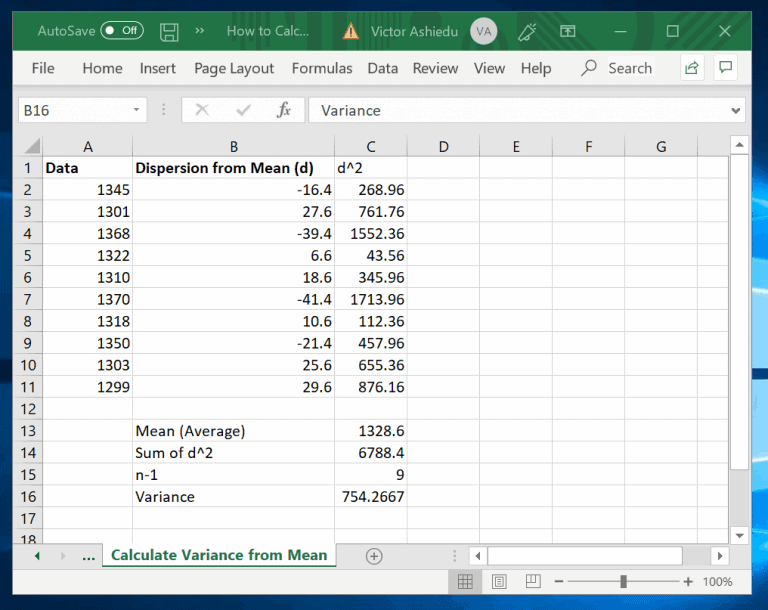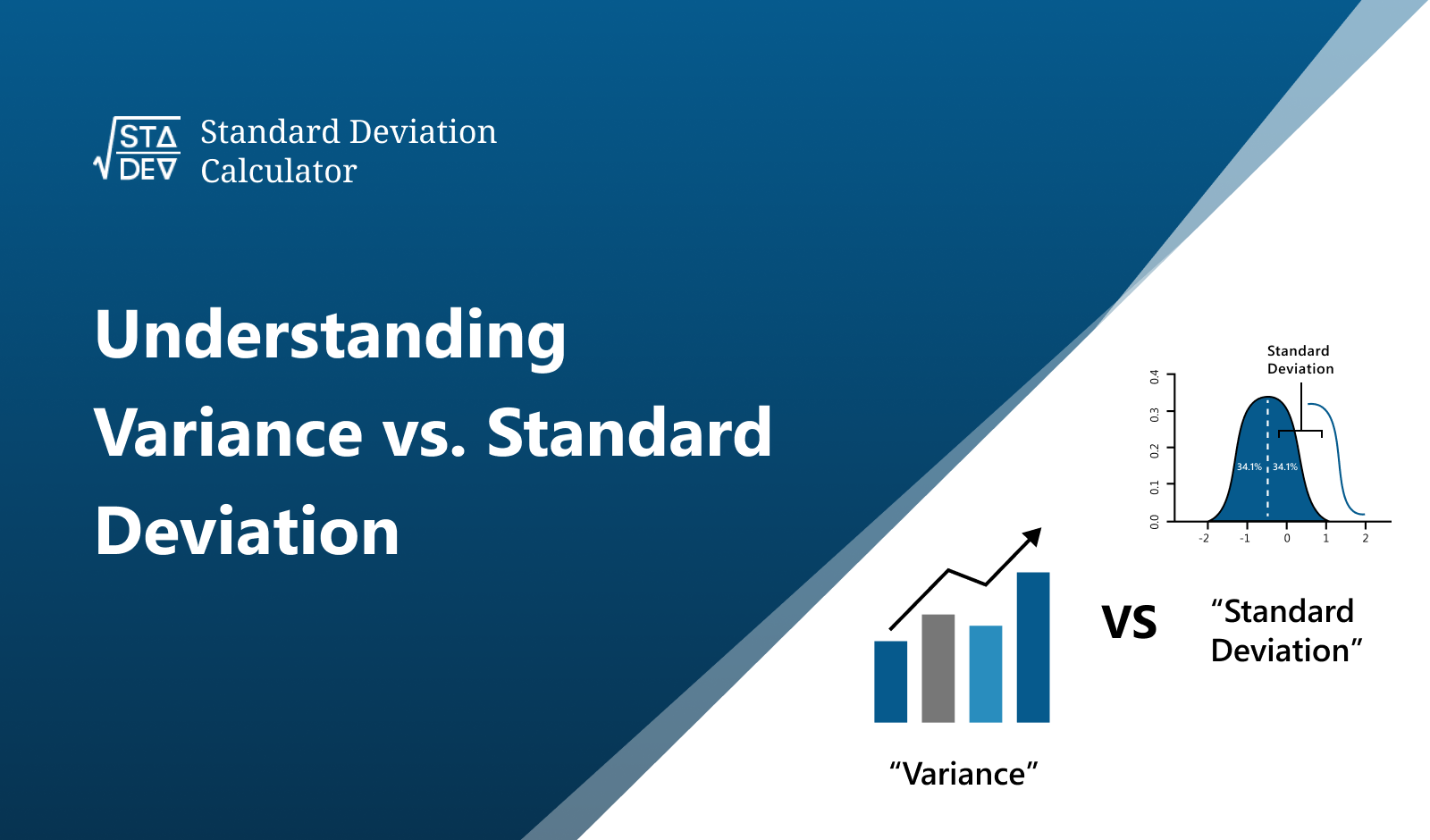
A low variance σ2 means that the data points are clustered more closely to the sample mean while a high variance indicates that the set of data is spread over a wider range of values. Variance is a measure of dispersion of data points from the mean. Low variance indicates that data points are generally similar and do not vary widely from the mean. High variance indicates that data values have greater variability and are more widely dispersed from the mean.

Variance measures a data set’s average dispersion in relation to the mean. It is often denoted by σ² for a population and by s² for a sample. A larger value of σ² or s² implies a larger dispersion of data points from the sample mean and vice versa. To find the mean of the given data set, substitute all values in the formula and divide by the sample size n. If the standard deviation is known, the variance can be calculated by squaring it (raising it to the power of two).
Variance offers a simple but powerful way to measure progress and adjust strategies. This guide shows you how to use variance in 5 necessary management traits of operations leaders Excel to stay on top of your numbers. The deviation from the mean for each observation is equal to its value minus the mean x̄.
For example, the narrow bell curve has a small variance in the normal distribution, and the wide bell curve has a large variance. It helps asset managers improve the performance of their investments. Financial analysts can use variance to assess the individual performance of components of an investment portfolio.
The calculation of variance can be carried out by using the sample variance calculator and population variance calculator above. Variance calculator is used to find the actual distance of the data values from the mean. This calculator provides the result of the mean, standard deviation, and the sum of squares along with steps. To calculate the variance from a set of values, specify whether the data is for an entire population or from a sample. Values must be numeric and may be separated by commas, spaces or new-line. Press the “Submit Data” button to perform the computation.
The first example is of population variance and the second example is of sample variance. Use this calculator to easily calculate the variance of a sample, or to estimate the population variance based on a random sample from it. The calculator also outputs the standard deviation, mean, range, count, and SEM. The sample standard deviation is the square root of the calculated variance of a sample data set.
For an unbiased statistic, we expect to get a standard deviation of 4 and a variance of 16.You may notice that dividing by (n-1) yields better results than dividing by n. The result for the variance is not biased; it is very close to 16, while the result for the standard deviation is biased. Then, calculate the quadratic differences, and the sum of squares of all the quadratic differences. Where p is the proportion of the population that experiences the event of interest, or has a characteristic of interest. Since a proportion is just a special type of mean, this standard deviation formula is derived through a simple transformation of the above formulas.
We are not to be held responsible for any resulting damages from proper or improper use of the service. If you are calculating variance with a handheld calculator, there is an easier formula you should use. This alternative formula is mathematically equivalent, but easier to type into a calculator. You might find it interesting that variance can be used to calculate the dispersion of data. A high variance indicates that a dataset is more spread out. Variance is a measure of the variability of the values in a dataset.
The sample variance is an often-used alternative formula for estimating the variance of a distribution. To find the variance using the variance calculator enter the comma-separated values in the box. A data sample is a collection of data from a population in statistics. The population is typically very large, making it impossible to list all the values in the population. Variance has a wide array of applications in statistical inference, statistical estimation, industrial quality control, and others. Enter a data set with values separated by spaces, commas or line breaks.
However, the Mean Median Mode Range Calculator helps you to calculate the mean median mode and range for the entered data set. When you do not have data for the entire population, you calculate the sample variance from the sampled data. Unlike population variance, when calculating the sample variance, you divide by (n – 1); in this case, the resulting statistic is unbiased. As mentioned above, the formula to calculate population variance is slightly different from sample variance. You can also use the population variance calculator above to calculate the variance for your set of data.
This variance finder will give you the number of samples, mean, standard deviation, and variance in one click. Using this calculator, you will get step-by-step results of standard deviation, mean, and variance. Many researchers prefer to work with the standard deviation, calculated as the variance’s square root. The standard deviation is less affected by outliers, is a smaller figure, and is easier to interpret. For a population, we would divide by n (the total number of data points), rather than n-1, to calculate the population variance. The variance of a group or set of numbers is a number that represents the ‘spread’ of the set.